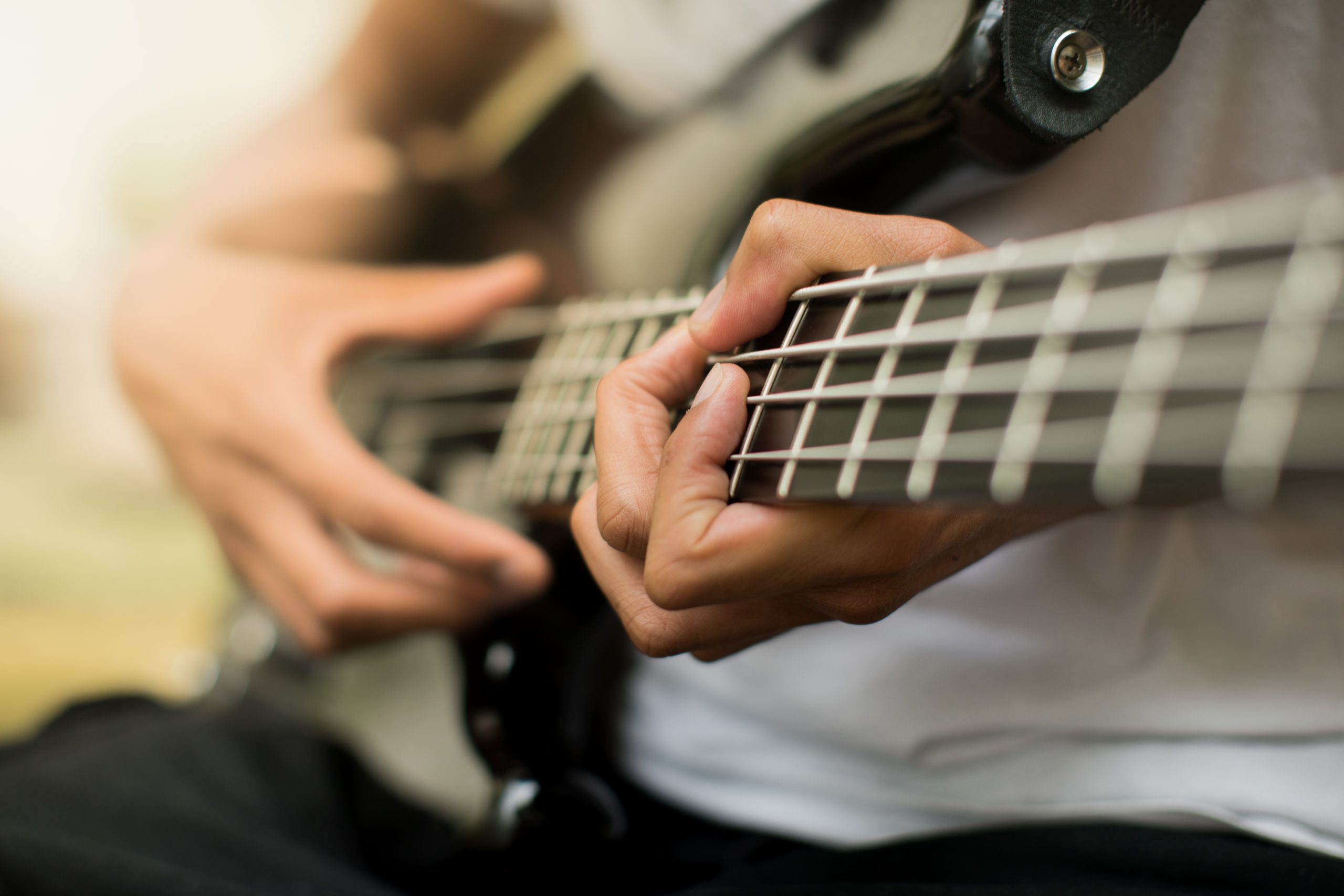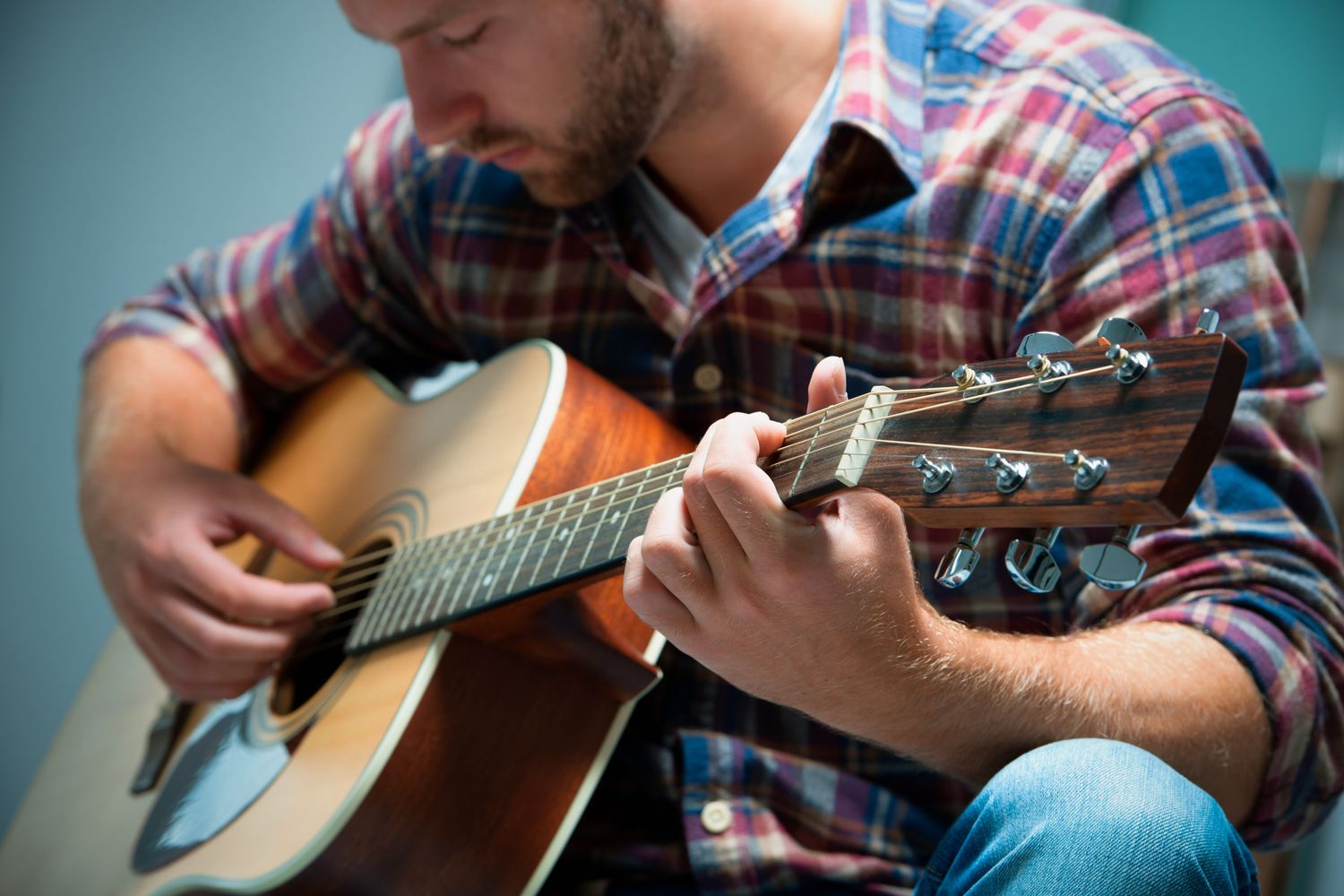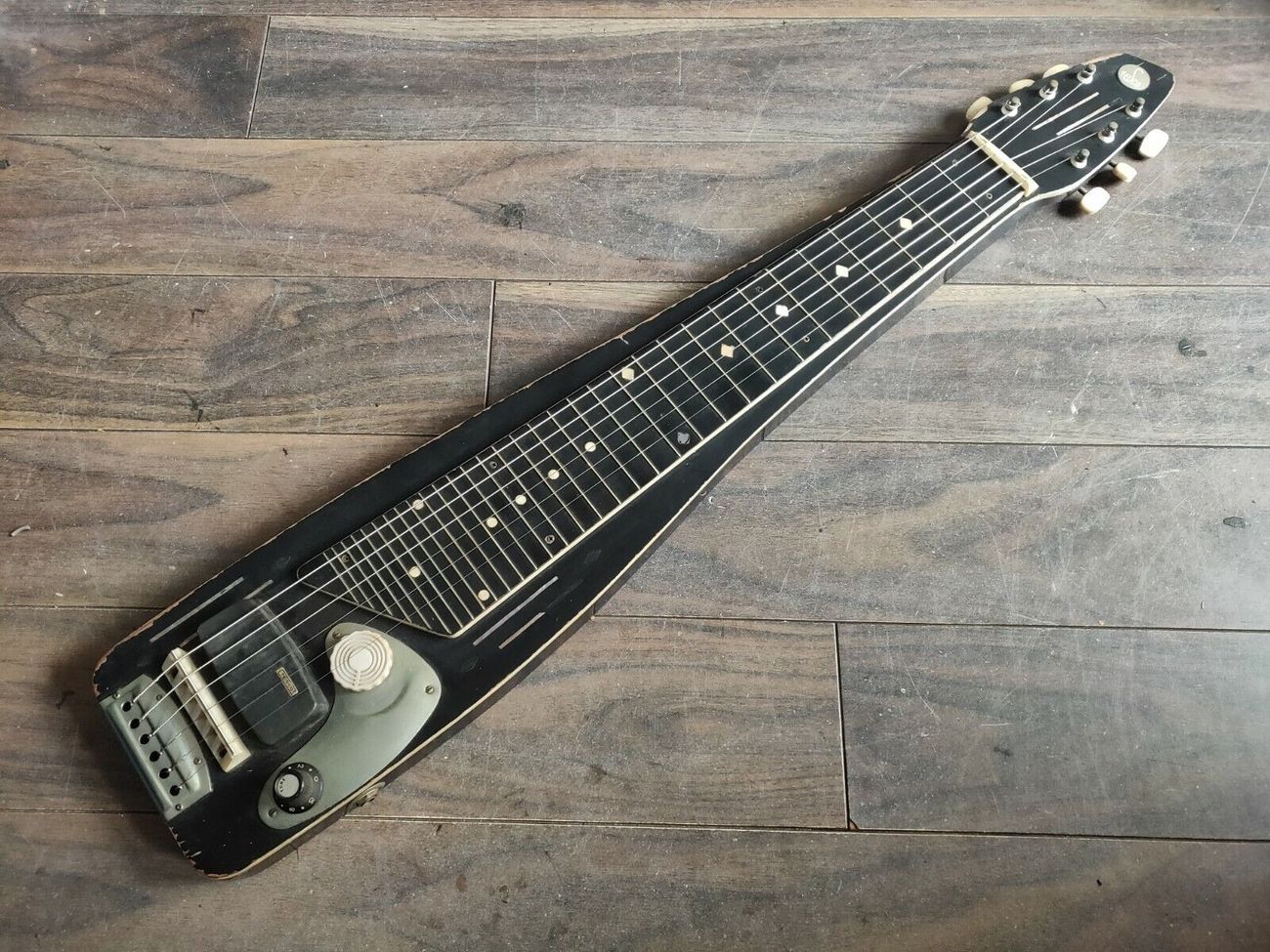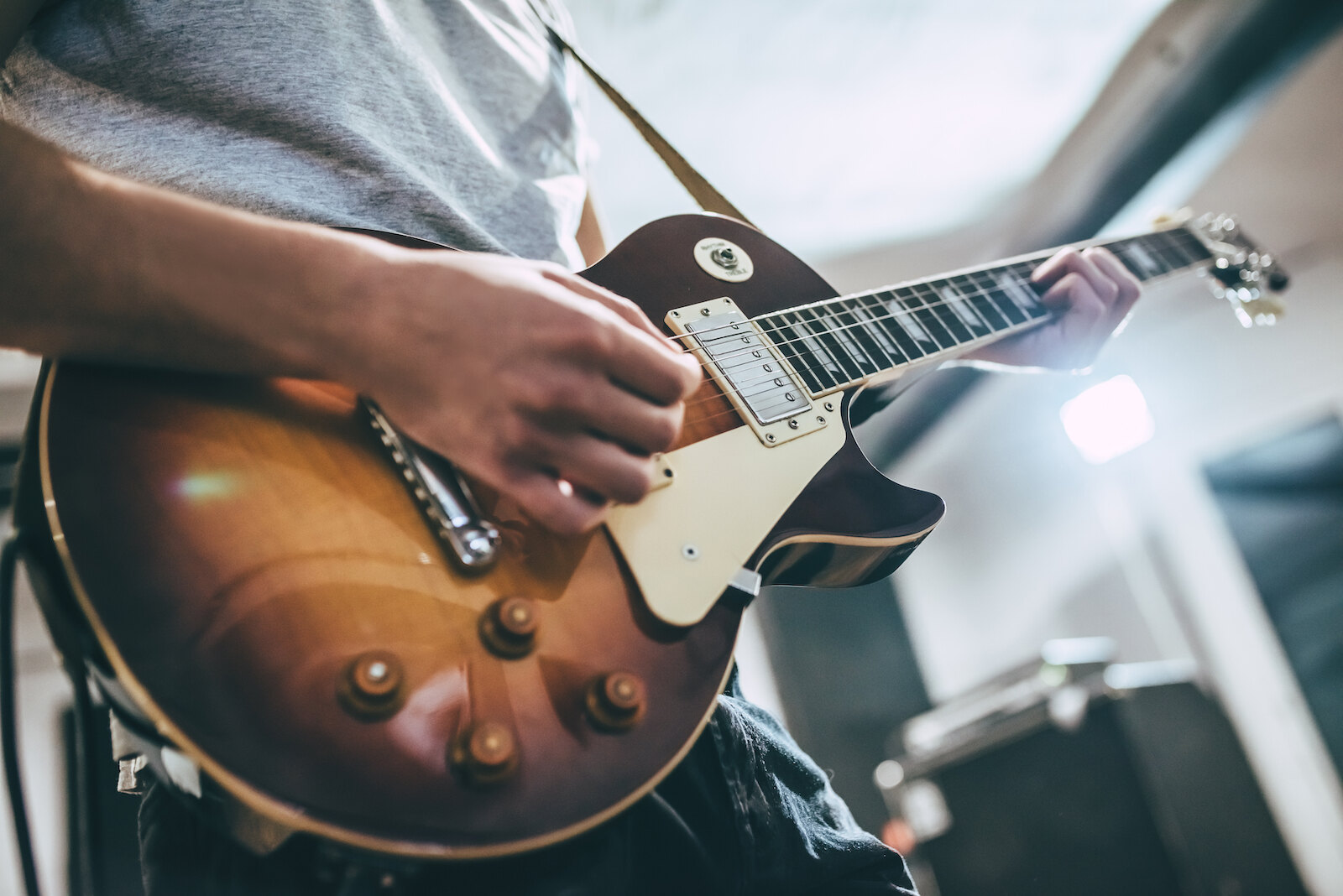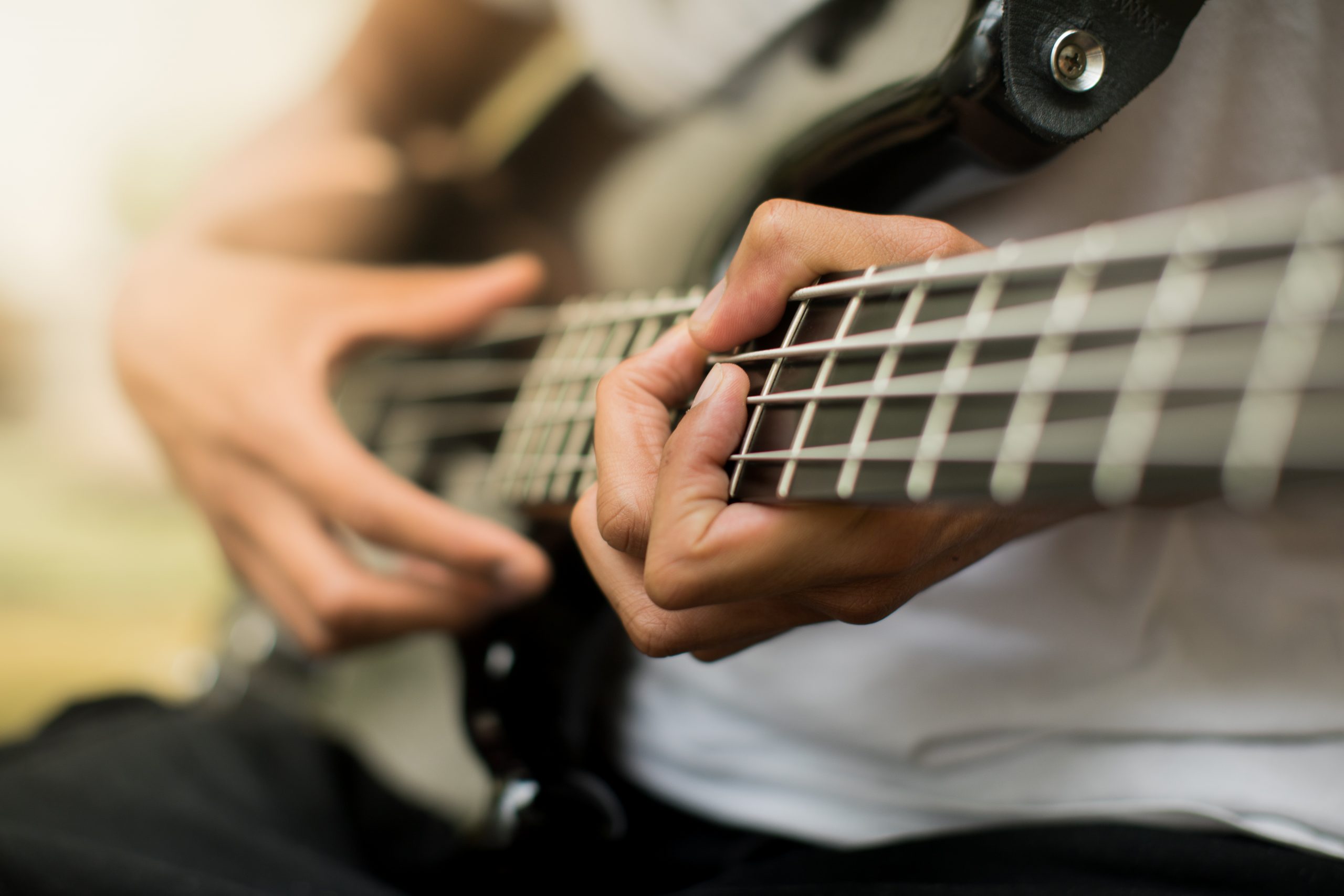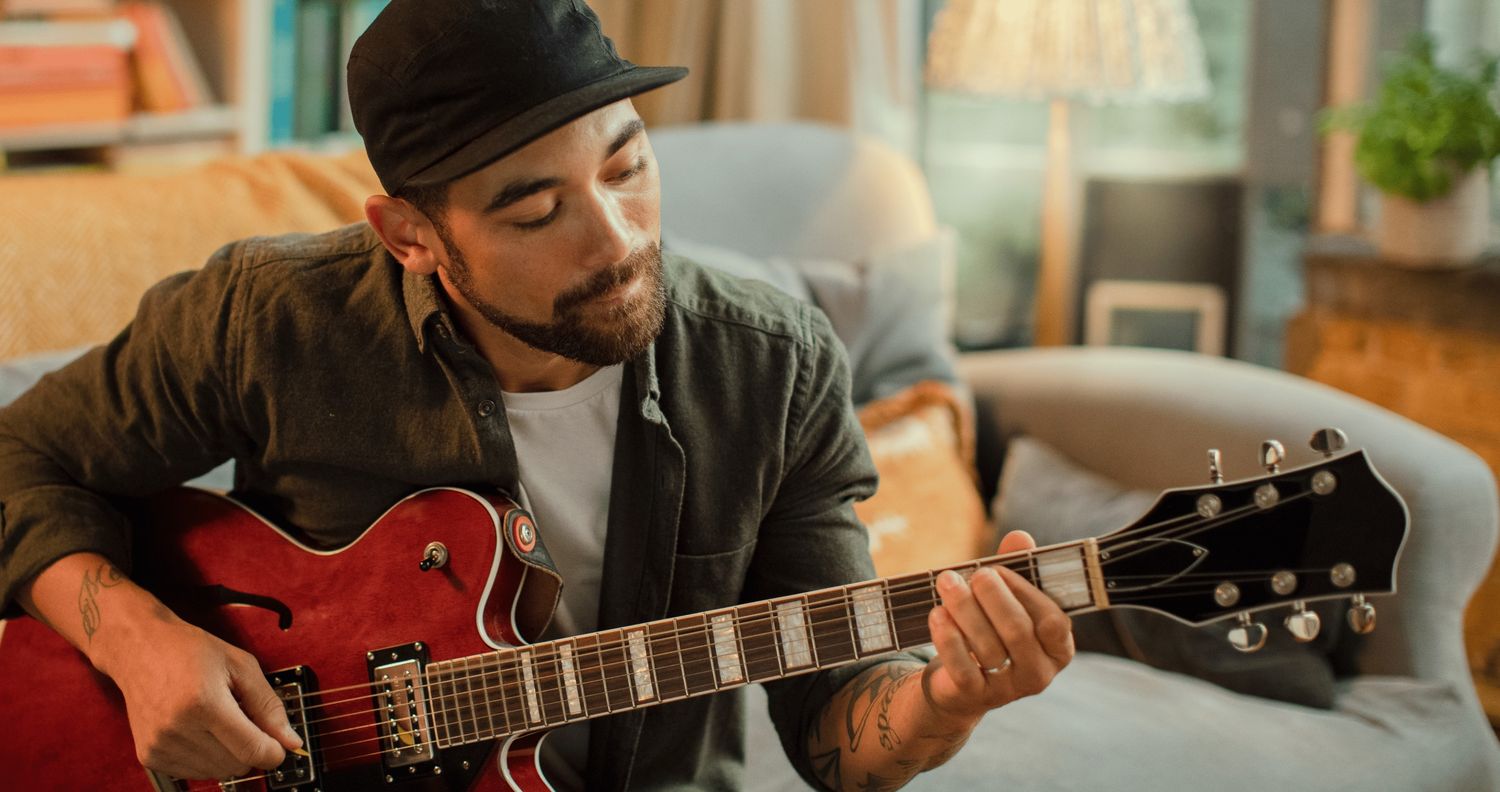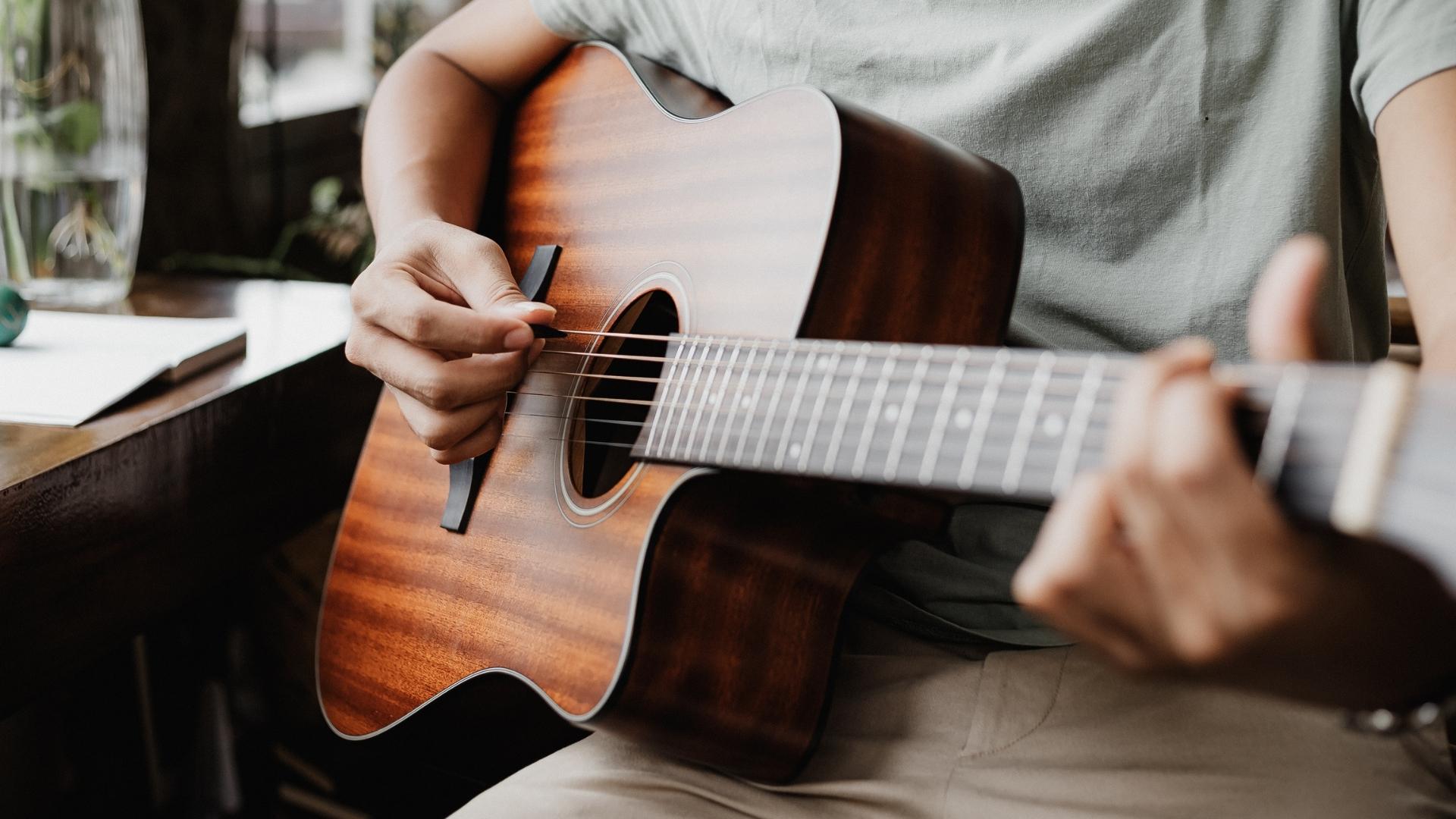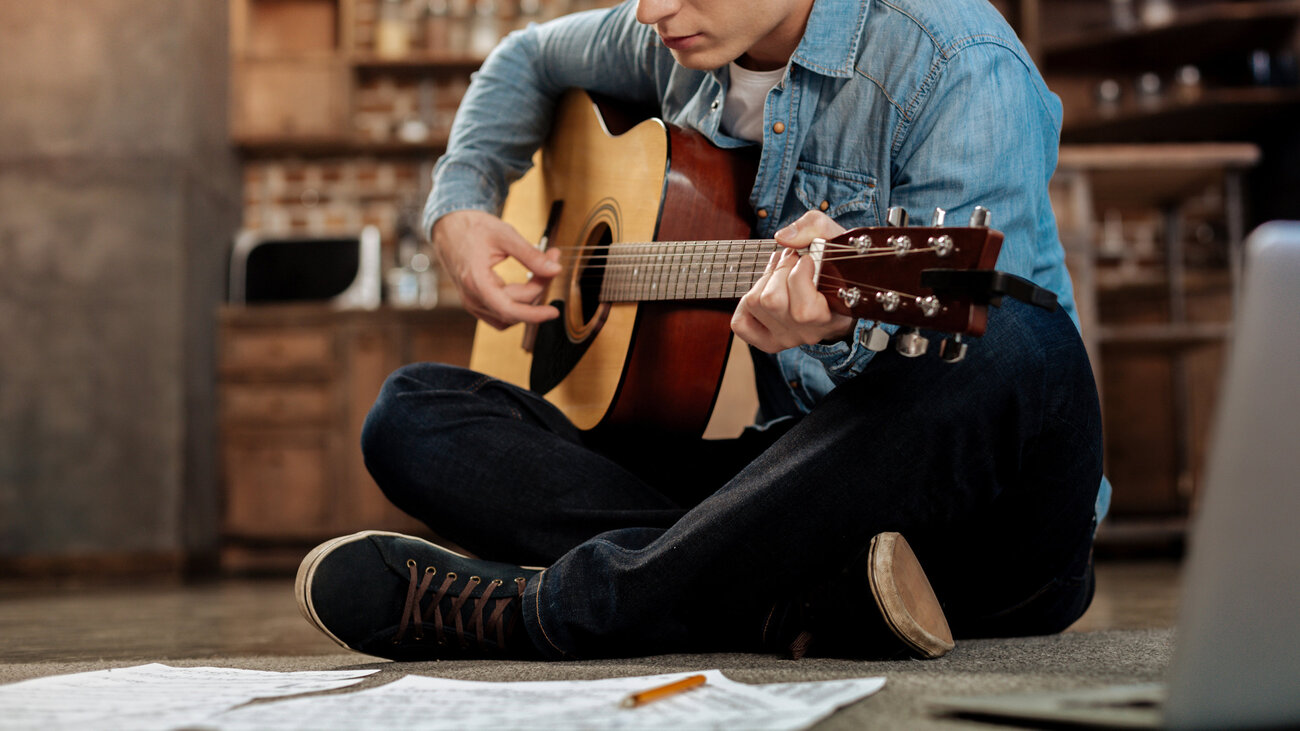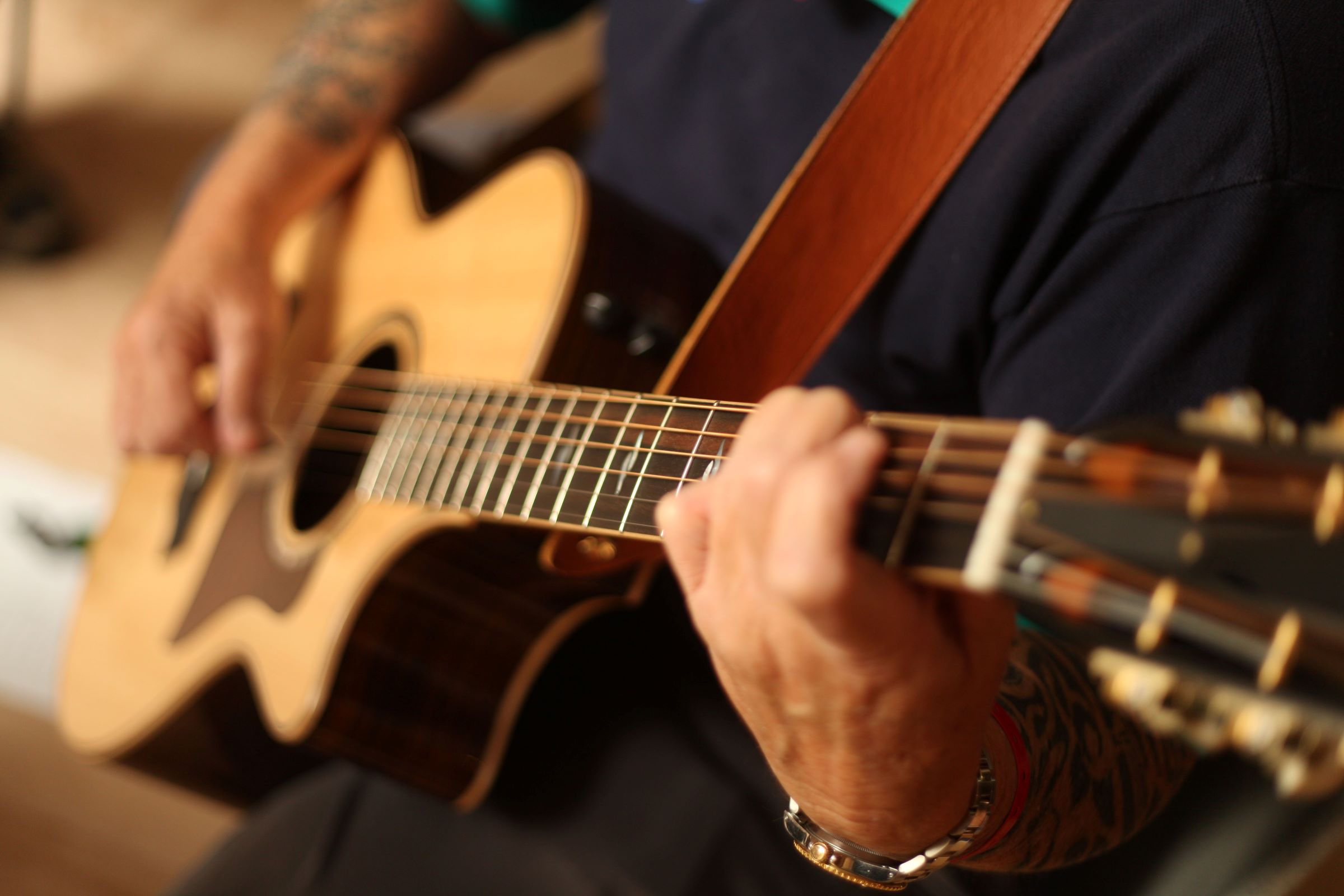

Reggae
How Do You Play Reggae On Guitar
Modified: February 15, 2024
Learn how to play reggae on guitar and master the rhythmic grooves and distinctive chord progressions of this vibrant genre. Step-by-step tutorials and tips to help you capture the authentic reggae sound.
(Many of the links in this article redirect to a specific reviewed product. Your purchase of these products through affiliate links helps to generate commission for AudioLover.com, at no extra cost. Learn more)
Table of Contents
Introduction
Welcome to the world of reggae music! Known for its laid-back groove, infectious melodies, and positive vibes, reggae has captured the hearts of music lovers worldwide. One of the essential instruments in reggae is the guitar, as it provides the rhythmic foundation and adds melodic elements to the songs. If you’re a guitarist looking to dive into the world of reggae, you’ve come to the right place.
In this article, we’ll explore the fundamentals of playing reggae on guitar, including rhythm, chords, strumming techniques, and more. Whether you’re a beginner or an experienced player, this guide will equip you with the knowledge and skills to start jamming to reggae tunes with confidence.
Reggae music originated in Jamaica in the late 1960s, with artists like Bob Marley, Peter Tosh, and Jimmy Cliff popularizing the genre internationally. It is characterized by its offbeat rhythms, typically accenting the second and fourth beats of a measure. This unique rhythmic pattern, also known as the “skank,” creates the distinct sound and groove found in reggae music.
Playing reggae on guitar requires a good understanding of rhythm and the ability to maintain a steady, relaxed feel. The emphasis is on simplicity and repetition, with the guitar acting as a rhythmic and melodic anchor for the band.
Now that you have a basic understanding of reggae music let’s dive into the specifics of playing reggae on guitar. We’ll cover everything from understanding reggae rhythm to strumming techniques to incorporating reggae riffs and even playing reggae lead guitar. So grab your guitar, tune it up, and let’s get started!
Understanding Reggae Rhythm
At the heart of reggae music lies its unmistakable rhythm. The key to playing reggae on guitar is mastering the offbeat pattern known as the “skank.” This rhythm is what gives reggae its infectious groove and distinctive feel.
The skank rhythm in reggae emphasizes the second and fourth beats of a measure, while the first and third beats are played more softly. This creates a syncopated feel that is both hypnotic and uplifting. To internalize the reggae rhythm, it helps to tap your foot or nod your head on the second and fourth beats.
One common approach to playing reggae rhythm guitar is using barre chords on the upbeat. Start by playing a simple chord progression, such as G, C, and D, and emphasize the second and fourth beats while lightly strumming on the first and third beats. This will give you a basic reggae rhythm to build upon.
Another important aspect of reggae rhythm is the use of staccato notes. Rather than letting the notes ring out, in reggae, the guitarist typically mutes the strings after striking them, creating a tight, percussive sound. This technique adds to the crispness and rhythmic precision of reggae music.
As you develop your reggae rhythm skills, experiment with different strumming patterns and variations. For instance, try incorporating upstrokes between the steady downstrokes to give the rhythm a bouncy, syncopated quality. Listen to some classic reggae tracks and pay attention to how the guitarists play their rhythms. Study the subtle nuances and variations they employ, and try to emulate them in your own playing.
Remember, the key to mastering reggae rhythm is practice and active listening. Play along with your favorite reggae songs, pay attention to the intricate patterns, and gradually build your muscle memory. With time and dedication, you’ll be able to internalize the reggae rhythm and infuse it into your own playing.
Reggae Guitar Chords
When it comes to playing reggae on guitar, having a solid understanding of reggae chords is essential. Reggae music often utilizes simple chord progressions that focus on open-position chords and barre chords to create a rhythmic foundation.
One of the most commonly used chord progressions in reggae is the I-IV-V progression. For example, in the key of G, this would translate to G, C, and D chords. These open-position chords are played with a relaxed, staccato strumming pattern, emphasizing the second and fourth beats.
In addition to open-position chords, barre chords are also widely used in reggae. Barre chords give you the flexibility to play any chord in any key while maintaining the same shape. Common barre chords used in reggae include the major and minor barre chords, such as the F major barre chord and the B minor barre chord.
Another important aspect of reggae guitar chords is the use of “skank” chords. These are simple triads played on the higher strings that provide a percussive, rhythmic element to the music. Skank chords are often played higher up the neck using muted strumming and staccato technique.
As you delve deeper into reggae guitar, consider exploring other chord embellishments to add flavor to your playing. Seventh chords and suspended chords are commonly used in reggae to create a richer and more dynamic sound. Experiment with adding these chord variations to your repertoire.
Remember, consistency and simplicity are key when playing reggae guitar chords. Focus on maintaining a steady rhythm, emphasizing the offbeat, and utilizing staccato technique to create a tight and energetic sound. Practice transitioning between chords smoothly and strumming with a relaxed and controlled motion.
Don’t be afraid to experiment and put your own twist on reggae chord progressions. Reggae music is all about expression and individuality, so feel free to add your own flavor and personal style to your playing.
Now that you have a solid foundation in reggae guitar chords, let’s move on to exploring different strumming techniques to add even more depth and groove to your reggae playing.
Strumming Techniques
Mastering the right strumming techniques is crucial for capturing the authentic reggae sound on guitar. Reggae strumming patterns typically emphasize the offbeat rhythms and incorporate a blend of upstrokes and downstrokes to create a bouncy and rhythmic feel.
One of the most common strumming patterns in reggae is the “one drop” pattern. This pattern emphasizes the third beat of the measure, giving the rhythm a unique syncopated feel. To play the one drop pattern, start by lightly strumming down on the second beat, and then emphasize an upstroke on the third beat. Complete the pattern with a light downstroke on the fourth beat. Practice this pattern slowly at first, and gradually increase your speed as you become comfortable with the rhythm.
Another popular strumming pattern in reggae is the “bubble rhythm.” This pattern incorporates a consistent downstroke on the second and fourth beats, while the first and third beats are played more softly or muted. The bubble rhythm gives the music a lively and bubbly quality, adding to the overall groove.
When incorporating strumming techniques in reggae, it’s important to maintain a relaxed and loose grip on the pick. Allow your wrist to move freely and avoid excessive tension. Strumming should feel fluid and natural, with a slight bounce to the rhythm.
As you develop your reggae strumming skills, explore variations and incorporate your own style. Experiment with different accents, add muted strums, or incorporate additional upstrokes to create a more intricate and unique sound.
Listening to reggae music and studying the strumming patterns of experienced reggae guitarists can provide valuable inspiration and insight. Pay attention to their rhythm and strumming techniques, and try to imitate their feel and timing.
Remember, practice is key when it comes to mastering reggae strumming patterns. Start with slower tempos and gradually increase your speed as you become more comfortable. Focus on maintaining a steady rhythm and relaxed technique. With time and dedication, you’ll be able to capture the authentic reggae sound through your strumming.
Now that we’ve covered the basics of reggae strumming, let’s explore an important technique that adds a percussive element to reggae guitar playing – palm muting.
Palm Muting Techniques
Palm muting is a crucial technique in reggae guitar playing that adds a percussive and rhythmic element to your sound. By lightly resting the side of your picking hand near the bridge of the guitar, you can achieve a muted and tight tone.
In reggae music, palm muting is often used to create a staccato effect. It helps in achieving a “choppy” sound that is characteristic of reggae rhythm guitar. To palm mute, lightly rest the fleshy part of your palm on the strings near the bridge, without completely muting them. This creates a controlled and percussive sound when strumming.
When executing palm muting, it’s important to find the right amount of pressure. Too much pressure can completely mute the strings, while too little pressure may result in a weak or inconsistent sound. Experiment with different degrees of pressure and find what works best for you and the specific sound you want to achieve.
Palm muting is typically used in conjunction with reggae strumming patterns, such as the one drop or bubble rhythm. It helps to accentuate the offbeat rhythms and create a tight and syncopated groove.
As you practice palm muting, focus on maintaining a steady rhythm while allowing for clarity in each note. Make sure not to press down too hard, as this can dampen the natural resonance of the strings. Aim for a balanced sound that still retains the desired percussive quality.
Listening to recordings of reggae songs and paying attention to how the guitar parts are palm muted can help you understand and replicate the technique. Study the hand position and placement, as well as the dynamics and control demonstrated by experienced reggae guitarists.
Remember, palm muting is a technique that requires practice and patience to master. Take your time to develop a comfortable and consistent technique, and gradually incorporate it into your reggae guitar playing. With practice, you’ll be able to add that signature percussive and rhythmic element to your reggae guitar sound.
Now that you have a solid grasp of rhythm, chords, strumming, and palm muting techniques, let’s delve into another essential aspect of playing reggae on guitar – incorporating reggae riffs.
Incorporating Reggae Riffs
Reggae riffs are memorable and melodic guitar lines that add depth and character to reggae music. They often serve as a catchy hook or complement to the rhythm section, enhancing the overall groove of the song. Incorporating reggae riffs into your playing can elevate your reggae guitar skills and make your playing more dynamic and interesting.
One common reggae riff is the skank riff, which is based on the offbeat rhythm of reggae music. For instance, in the key of G, you can play the skank riff by strumming the G chord on the second and fourth beats of the measure, muting the strings in between. This creates a rhythmic and percussive riff that complements the grooves in the music.
Another popular reggae riff is the “double-stop” riff. This technique involves playing two adjacent notes simultaneously. For example, in the key of G, you can play a double-stop riff by placing your index finger on the third fret of the low E string and your middle finger on the fourth fret of the D string. Strum these two strings together, and slide the shape up and down the neck to create a melodic reggae riff.
When incorporating reggae riffs, it’s important to consider the phrasing and timing. Pay attention to where the riff falls within the bar, and make sure it aligns with the overall rhythm of the song. You can use the skank rhythm as a reference and incorporate the riff during the second and fourth beats or in between the chords.
Listening to reggae songs and studying the guitar parts of experienced reggae guitarists will provide inspiration and insight into the various riffing techniques used in reggae music. Analyze the melodic patterns, note choices, and rhythmic variations, and try to incorporate them into your own playing.
Experimentation and creativity are key when it comes to creating your own reggae riffs. Don’t be afraid to try out different chord voicings, scales, and techniques to come up with unique and captivating riffs. Let your ear guide you and trust your musical instincts.
Remember, incorporating reggae riffs into your playing is a gradual process. Start with simple riffs and gradually build upon them as you become more comfortable. Practice the riffs in conjunction with the rhythm and chords to ensure a seamless and cohesive sound.
With time, practice, and a bit of improvisation, you’ll be able to incorporate reggae riffs effortlessly to enhance your reggae guitar playing.
Next, let’s move on to playing reggae lead guitar and explore the techniques associated with it.
Playing Reggae Lead Guitar
While reggae is primarily known for its rhythmic elements, lead guitar playing can also play a significant role in adding melodic flair and expression to the music. Playing reggae lead guitar allows you to take center stage and showcase your skills in improvisation and phrasing.
When it comes to lead guitar in reggae, the focus is on simplicity and space. Unlike other genres where fast and flashy solos take the spotlight, reggae lead guitar emphasizes melodic lines and carefully crafted solos that complement the overall vibe of the song.
One essential technique in reggae lead guitar is using slides. Slides allow you to connect notes smoothly and add a vocal-like quality to your playing. Experiment with sliding into notes from below or above and listen to how it enhances the melodic flow.
Another important technique is vibrato. Vibrato adds depth and expressiveness to your notes, and in reggae, it helps to sustain the notes and give them a warm and soulful sound. Experiment with different speeds and widths of vibrato to find the right feel for each phrase.
Reggae lead guitar also incorporates double stops and triads. These chord-based techniques add richness to your phrases and create a fuller sound. Experiment with different combinations of double stops and triads to create unique and memorable melodies.
When playing reggae lead guitar, it’s important to listen closely to the rhythm section and the overall groove of the song. Your lead lines should complement and enhance the existing rhythms rather than overpowering them. Play around the timing of the skank rhythm and incorporate pauses to create space in your solos.
Studying the lead guitar playing of renowned reggae guitarists can provide valuable insight and inspiration. Listen to artists like Junior Marvin, Earl “Chinna” Smith, or Ernest Ranglin, and pay attention to their phrasing, note choices, and overall feel. Try to capture the essence of their style while still incorporating your own personality into your playing.
As with any style of lead guitar playing, practice and experimentation are key. Start by learning simple reggae melodies and solos, and gradually build your repertoire. Focus on incorporating the techniques mentioned and strive for fluidity and melodic expression in your playing. Jamming along with reggae tracks and playing with other musicians will also help you develop your improvisational skills and enhance your ability to play with the flow of the music.
Playing reggae lead guitar is an opportunity to express yourself and add a melodic touch to the rhythmically driven genre. With dedication and creativity, you can bring your own unique voice to the forefront and elevate the reggae experience for both yourself and the listeners.
Now that we’ve covered the essentials of playing reggae lead guitar, let’s move on to some valuable tips for playing reggae on guitar.
Tips for Playing Reggae on Guitar
Playing reggae on guitar requires a unique approach and understanding of the genre’s characteristics. To help you navigate this style of music and improve your reggae guitar playing, here are some valuable tips:
- Focus on the rhythm: Reggae music is all about the groove, so make sure to prioritize rhythm in your playing. Practice with a metronome or drum track to develop a solid sense of timing and learn to lock in with the bass and drums.
- Listen to reggae music: Immerse yourself in the genre by listening to a wide range of reggae artists and songs. Pay attention to the guitar parts and the overall vibe of the music. This will help you understand the essence of reggae and incorporate its sounds into your playing.
- Master the skank rhythm: The skank rhythm is the heartbeat of reggae. Focus on getting comfortable with emphasizing the offbeat patterns and creating a tight and articulate sound. Practice strumming along with reggae songs to enhance your rhythm skills.
- Use dynamics: Reggae music often incorporates dynamics to create tension and release. Experiment with playing softly and gradually increasing the intensity, while also incorporating breaks and pauses in your playing. This will add depth and variation to your reggae guitar sound.
- Explore reggae scales and modes: While reggae is predominantly rooted in major and minor scales, there are specific scales and modes associated with the genre. Experiment with the mixolydian or dorian mode, as they often add a unique flavor to reggae solos and melodies.
- Incorporate reggae-inspired effects: Experimenting with effects such as delay, reverb, and chorus can add a touch of authenticity to your reggae guitar sound. Use these effects subtly to enhance your tone and create ambiance.
- Play with a relaxed and fluid technique: Reggae guitar playing should sound effortless and laid-back. Relax your fretting hand and avoid unnecessary tension. Focus on smooth transitions between chords and strive for a flowing and melodic feel in your playing.
- Jam and collaborate: Playing with other musicians, particularly those familiar with reggae, can greatly improve your skills. Jamming and collaborating allows you to interact, learn from each other, and develop a better understanding of how different instruments fit together in the reggae genre.
- Be open to improvisation: Reggae music often leaves space for improvisation, allowing you to express yourself freely. Learn to trust your instincts and embrace spontaneity in your reggae guitar playing. Feel the music and let your creativity flow.
Remember, mastering reggae guitar playing takes time and dedication. Be patient with yourself and enjoy the journey. By incorporating these tips into your practice routine and immersing yourself in the reggae genre, you’ll gradually develop a unique and authentic reggae guitar style.
Now that you’ve learned valuable tips for playing reggae on guitar, you’re well-equipped to embark on your reggae guitar journey. Keep exploring, experimenting, and enjoying the groove and spirit of reggae music!
Need to check your HTML? Use the HTML Validator tool to ensure proper HTML encoding.
Conclusion
Congratulations! You have now embarked on a journey to master the art of playing reggae on guitar. By understanding the fundamentals of reggae rhythm, mastering reggae chords, exploring strumming techniques, incorporating palm muting, and adding reggae riffs and lead guitar playing to your repertoire, you have gained the tools and knowledge to bring the unmistakable reggae sound to life.
Remember, reggae music is all about groove, positivity, and expressing yourself through the music. It’s not just about playing the right notes but capturing the essence and vibe of the genre. Practice regularly, listen to reggae music, and immerse yourself in its rhythms and melodies. Embrace the simplicity, clarity, and authenticity that make reggae so captivating.
As you continue your reggae guitar journey, be open to exploring different reggae subgenres and styles. Reggae is a vast and diverse genre, and each artist brings their own unique flavor to the music. Don’t be afraid to experiment, innovate, and incorporate your own voice into your reggae guitar playing.
Furthermore, remember the importance of rhythm and collaboration. While the guitar is an essential instrument in reggae, it works in harmony with the bass, drums, and other instruments. Jamming with other musicians, playing with bands, or even just practicing along with reggae recordings will enhance your reggae guitar skills and deepen your understanding of the genre.
Lastly, have fun and enjoy the process. Reggae music is meant to uplift and bring joy, and playing reggae on guitar is no different. Embrace the laid-back spirit, embrace the positive vibes, and let the reggae music flow through your fingertips. With dedication, practice, and a genuine love for the genre, you’ll become a skilled reggae guitarist in no time.
So, grab your guitar, tune it up, and let the reggae rhythms guide you. Get lost in the groove, create memorable melodies, and spread the positive vibrations of reggae through your music. Happy playing!

